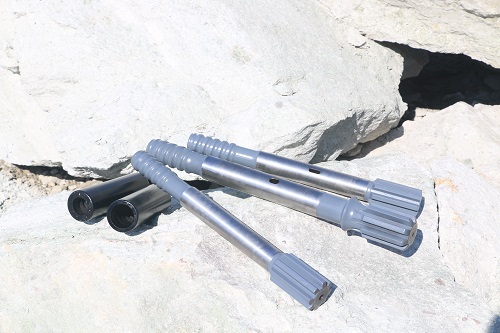Abstract:In the realm of drilling operations, the selection of appropriate tools plays a pivotal role in ensuring efficient and e...
In the realm of drilling operations, the selection of appropriate tools plays a pivotal role in ensuring efficient and effective outcomes. Two such essential tools are Reaming Bits and Tapered Bits. These tools are critical components of drilling processes, each designed with unique features to cater to specific drilling needs. This article aims to provide a comprehensive analysis of Reaming Bits and Tapered Bits, highlighting their distinct characteristics, applications, advantages, and limitations.

Reaming Bits: Unveiling Precision and Versatility
Reaming Bits are precision tools used in drilling operations to enlarge existing holes to a predetermined diameter. They are renowned for their ability to achieve high levels of accuracy and precision, making them indispensable in industries where dimensional tolerances are critical. Reaming Bits feature a symmetrical cutting edge geometry, often consisting of multiple flutes, that ensures uniform material removal during the reaming process. This geometry minimizes chatter and vibration, resulting in smooth and accurate hole enlargement.
Applications of Reaming Bits span a wide range of industries, including aerospace, automotive, and medical manufacturing. In aerospace, Reaming Bits are employed to achieve precise holes in turbine blades, ensuring optimal airflow. Similarly, the automotive sector utilizes Reaming Bits to create accurate holes for engine components, enhancing overall performance. The medical industry relies on Reaming Bits for the creation of holes in bone implants, facilitating seamless integration into the human body.
Advantages of Reaming Bits are numerous. They provide exceptional dimensional accuracy, surface finish, and hole geometry, reducing the need for secondary operations. Additionally, their versatility enables them to work with various materials, from metals to composites, further expanding their applicability.
However, Reaming Bits also have limitations. They require careful setup and alignment to achieve desired precision, and their use is generally more time-consuming compared to other drilling methods. Furthermore, Reaming Bits are not ideal for initial hole creation, as they are specifically designed for hole enlargement.
Tapered Bits: Navigating Diverse Drilling Scenarios
Tapered Bits, as the name suggests, feature a gradually tapering design from the shank to the cutting edge. This unique geometry imparts versatility and adaptability to Tapered Bits, making them suitable for various drilling scenarios, especially those involving angled or curved surfaces. The taper facilitates easy access to tight spaces and enables efficient chip evacuation during drilling.
The applications of Tapered Bits are diverse. They are extensively used in woodworking, metalworking, and construction industries. In woodworking, Tapered Bits are employed for countersinking screws, providing a flush finish. Metalworkers utilize Tapered Bits for deburring, chamfering, and creating conical holes. In construction, Tapered Bits are instrumental in drilling holes for anchors and dowels, offering reliable structural support.
The advantages of Tapered Bits are closely tied to their unique design. The taper allows for rapid drilling and improved control, reducing the likelihood of tool breakage. Tapered Bits excel in scenarios where standard bits might struggle due to limited space or irregular surfaces.
Despite their versatility, Tapered Bits have certain limitations. They might not achieve the same level of precision as Reaming Bits, and their cutting edge geometry may limit their use with certain materials, especially high-strength alloys. Additionally, Tapered Bits might produce less refined surface finishes compared to other drilling methods, necessitating secondary finishing processes in some applications.
In the world of drilling operations, both Reaming Bits and Tapered Bits serve as indispensable tools, each contributing its unique strengths to diverse industrial processes. Reaming Bits offer unparalleled precision and dimensional accuracy, making them ideal for applications where tight tolerances are paramount. Tapered Bits, on the other hand, excel in versatility, adaptability, and efficient chip evacuation, making them valuable assets in scenarios with limited access or irregular surfaces.
Ultimately, the choice between Reaming Bits and Tapered Bits depends on the specific requirements of the drilling task at hand. Engineers, machinists, and manufacturers must carefully evaluate factors such as material, desired hole geometry, tolerances, and surface finish to make an informed decision. Both tools have their merits and limitations, and a comprehensive understanding of their attributes empowers professionals to optimize drilling processes and achieve superior outcomes in various industries.

 简体中文
简体中文 English
English España
España русский
русский
